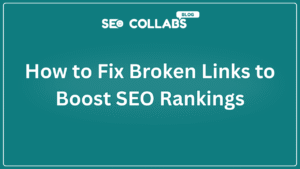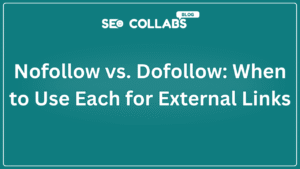In the competitive world of SEO, scaling link building is essential for growth, but maintaining quality is critical to avoid penalties and ensure long-term success. Here’s a comprehensive guide to scaling your efforts while preserving the integrity of your backlink profile.
Table of Contents
- 1. Prioritize High-Quality Content Creation
- 2. Strategic Guest Posting
- 3. Broken Link Building
- 4. Skyscraper Technique
- 5. Digital PR and Media Outreach
- 6. Automate Outreach Efficiently
- 7. Build Partnerships and Collaborations
- 8. Monitor and Audit Backlinks
- 9. Train Your Team and Standardize Processes
- 10. Measure Success and Adapt
- Pitfalls to Avoid
- Conclusion
- Tools Recap
1. Prioritize High-Quality Content Creation
Why It Matters: Exceptional content naturally attracts backlinks and serves as the foundation of scalable link building.
Actionable Strategies
- Create Comprehensive Guides: Develop in-depth resources (e.g., “The Ultimate Guide to Sustainable SEO Practices”).
- Leverage Data-Driven Content: Publish original research, surveys, or case studies.
- Produce Visual Assets: Infographics, videos, and interactive tools encourage shares and links.
Example
A SaaS company increased organic traffic by 150% by publishing annual industry reports cited by authoritative blogs.
Tools
Use Clearscope or MarketMuse to identify content gaps and optimize for relevance.
Also Read
2. Strategic Guest Posting
Why It Matters: Guest posting on reputable sites builds authority and drives referral traffic.
Best Practices
- Target Authority Sites: Focus on domains with a Domain Rating (DR) of 50+ and niche relevance.
- Personalize Pitches: Tailor outreach emails to highlight how your content benefits their audience.
- Diversify Anchor Text: Use branded, generic, and long-tail keywords naturally.
Avoid
Overloading sites with excessive links or irrelevant topics.
Tools
Ahrefs for competitor backlink analysis.
Hunter.io for prospecting contact details.
3. Broken Link Building
Why It Matters: Replacing dead links with your content is a scalable, ethical tactic.
Steps:
- Use Ahrefs or Check My Links to find broken links on relevant sites.
- Offer your content as a replacement via personalized outreach.
- Follow up politely to secure placements.
Example
A travel blog replaced 30 broken links with its updated city guides, earning high-DR backlinks.
4. Skyscraper Technique
Why It Matters: Improve existing content to outrank competitors and attract their backlinks.
Process
- Identify top-performing content in your niche.
- Enhance it with updated data, multimedia, or actionable insights.
- Outreach to sites linking to the original piece.
Case Study
A marketing agency revamped a competitor’s “SEO Checklist” into an interactive tool, earning 50+ new links.
5. Digital PR and Media Outreach
Why It Matters: Earn high-authority links through press coverage and expert contributions.
Tactics
- Publish Newsworthy Studies: Share unique data via press releases.
- Contribute to HARO (Help a Reporter Out): Position yourself as an industry expert.
- Collaborate with Journalists: Offer insights for trending stories.
Tools
Muck Rack for media lists.
PR Newswire for distribution.
6. Automate Outreach Efficiently
Why It Matters: Automation streamlines processes without sacrificing personalization.
Effective Tools
- BuzzStream: Manage outreach campaigns and track responses.
- Lemlist: Send personalized cold emails at scale.
- Mailshake: Automate follow-ups to boost response rates.
Key Tip
Customize templates with the recipient’s name, recent work, and mutual interests.
7. Build Partnerships and Collaborations
Why It Matters: Co-created content expands reach and credibility.
Strategies
- Partner with influencers for joint webinars or eBooks.
- Collaborate with complementary brands on resource guides.
- Engage in expert roundups to tap into new audiences.
Example
A fitness brand co-hosted a webinar with nutritionists, earning backlinks from health blogs.

8. Monitor and Audit Backlinks
Why It Matters: Regular audits prevent toxic links from derailing your SEO.
Steps
- Use Google Search Console to identify harmful links.
- Disavow spammy domains using Google’s Disavow Tool.
- Continuously track Domain Rating (DR) and organic traffic.
Tools
SEMrush for toxic link detection.
Monitor Backlinks for real-time alerts.
9. Train Your Team and Standardize Processes
Why It Matters: Consistency ensures quality as you scale.
SOPs (Standard Operating Procedures)
- Define criteria for vetting websites (e.g., DR, relevance).
- Create templates for outreach, follow-ups, and content briefs.
- Conduct regular training on Google’s guidelines.
10. Measure Success and Adapt
Key Metrics
- Domain Authority (DA): Track improvements via Moz.
- Referral Traffic: Monitor spikes using Google Analytics.
- Keyword Rankings: Use Ahrefs to assess SEO impact.
Adjust Strategies
Pivot based on performance data (e.g., shift focus from guest posts to digital PR if conversions lag).
Pitfalls to Avoid
- Over-Automation: Balance tools with human oversight to maintain personalization.
- Ignoring Relevance: Prioritize niche alignment over sheer domain authority.
- Neglecting Relationships: Build long-term partnerships, not transactional links.
Conclusion
Scaling link building without losing quality requires a blend of strategic content creation, smart automation, and relentless focus on relevance. By prioritizing value, leveraging ethical tools, and fostering genuine partnerships, you can achieve sustainable growth that withstands algorithm changes.

Final Tip: Start small, iterate based on data, and always align with Google’s E-E-A-T (Expertise, Authoritativeness, Trustworthiness) guidelines. Quality over quantity isn’t just a mantra—it’s the key to lasting SEO success. 🚀
Tools Recap
- Prospecting: Ahrefs, Hunter.io
- Outreach: BuzzStream, Lemlist
- Content: Clearscope, Canva
- Monitoring: Google Search Console, SEMrush
By integrating these strategies, your link-building efforts will scale efficiently while maintaining the quality that search engines reward.




